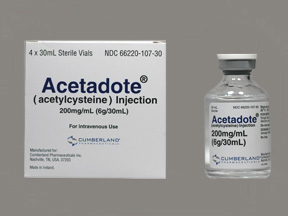
Acetylcysteine的功能很多,大家如果還有點印象,可以參考這邊:
- N-Acetyl-L-Cysteine 用於美白
- N acetylcysteine對Acetaminophen的中毒治療
- Acetaminophen與Acetylcysteine併用?
- 老藥新用:Acetylcysteine預防X光照相術顯影劑之腎毒性
之前也幫大家簡單整理過:
認識 N acetylcysteine
這次我就從幾個資料庫挑出他的適應症給大家參考:
- Acetaminophen overdose
- Acute renal failure, In patients with chronic renal insufficiency undergoing cardiac surgery; Prophylaxis
- Acute respiratory distress syndrome
- Administration of anesthesia for procedure
- Asthmatic bronchitis, chronic
- Atelectasis, Due to mucous obstruction
- Bezoar
- Blepharitis
- Bronchopulmonary disease, acute, With abnormal, viscid, or inspissated mucous secretions
- Cancer
- Complication of surgical procedure - Respiratory complication
- Cystic fibrosis, Pulmonary complications; Adjunct
- Cystinosis
- Cytotoxicity; Treatment and Prophylaxis
- Diagnostic procedure on lower respiratory tract
- Disease of liver
- Disease of respiratory system, chronic, With abnormal, viscid, or inspissated mucous secretions
- Drug allergy
- Drug tolerance, Nitrate
- Hemorrhagic cystitis; Prophylaxis
- Hepatorenal syndrome
- HIV infection
- Injury of lung
- Lamellar ichthyosis
- Malaria
- Meconium ileus
- Multiple organ failure; Prophylaxis
- Occlusion of ureter, Mucolysis
- Operation on heart
- Otitis media
- Radiographic contrast agent nephropathy; Prophylaxis
- Respiratory tract infection
- Sjögren's syndrome
- Tracheostomy care
- Unverricht-Lundborg syndrome
還滿多的,現在來一個一個介紹給大家知道,不過礙於文章字數有限,所以可能會拆成幾篇分批描述:
[Micromedex][02]Acetylcysteine適應症整理
[Micromedex][03]Acetylcysteine適應症整理
[Micromedex][04]Acetylcysteine 適應症整理
[Micromedex][05]Acetylcysteine適應症整理
1.Acetaminophen overdose
Acetylcysteine is indicated as oral therapy as an antidote to prevent or lessen hepatic injury which may occur following the ingestion of a potentially hepatotoxic quantity of acetaminophen (Prod Info acetylcysteine inhalation solution, 2004).
Acetylcysteine is indicated for intravenous therapy administered within 8 to 10 hours following ingestion of a potentially hepatotoxic amount of acetaminophen (Prod Info ACETADOTE(R) IV injection, 2008)
In a comparison of studies using oral or intravenous (IV) N-acetylcysteine (NAC) for the treatment of acetaminophen overdose, there was no clear difference in efficacy of the two modes of administration; the intravenous route offers advantages in reduced hospital stay as well as in being unaffected by vomiting and by oral administration of charcoal (Buckley et al, 1999).
N-acetylcysteine is the agent of choice to prevent hepatotoxicity from acetaminophen toxicity (Peterson & Rumack, 1988).
In a national, multicenter study from 1976 to 1985, oral N-acetylcysteine was effective in the treatment of acetaminophen overdose, especially if started within 8 hours of acetaminophen ingestion, but treatment was still indicated as late as 24 hours after ingestion (Smilkstein et al, 1988a).
In pediatric patients with acetaminophen overdose, intravenous N-acetylcysteine (NAC) administered over 52 hours was as effective as oral NAC administered over 72 hours (Perry & Shannon, 1998).
3-a-1) The American College of Emergency Physicians (ACEP) has developed a clinical policy focusing on the management of patients presenting to the emergency department (ED) with hepatic failure or hepatotoxicity thought to be due to acetaminophen or patients with a suspected or known acetaminophen overdose who cannot be risk stratified by the Rumack-Matthew nomogram. The Rumack-Matthew nomogram is a tool used to predict patients at risk for developing hepatotoxicity after a single acute acetaminophen ingestion at a known point in time (no more than 24 hours postingestion) and it is used to determine whether or not N-acetylcysteine (NAC) is indicated. However, there are no specific strategies for patients presenting with hepatic failure or hepatotoxicity thought to be due to acetaminophen or patients with a suspected or known acetaminophen overdose with clinical situations such as: greater than 24 hours postingestion, an unknown time of or unreliable history of ingestion, extended-release formulation or repeated supratherapeutic ingestions. The following describes the treatment recommendations (intended for physicians working in the ED) for the use of NAC in patients older than 12 years who present to the ED with known or suspected acetaminophen overdose:(Wolf et al, 2007).
Administer NAC to acute acetaminophen patients with either possible or probable risk for hepatotoxicity as determined by the Rumack-Matthew nomogram to reduce the incidence of severe hepatotoxicity and mortality, ideally within 8 to 10 hours postingestion (Wolf et al, 2007).
Do not administer NAC to acute acetaminophen overdose patients with no risk for hepatotoxicity as determined by the Rumack-Matthew nomogram (Wolf et al, 2007).
3-a-1-b) ACEP Treatment Recommendation For Patients With Acetaminophen Overdose Who Cannot Be Risk Stratified By The Rumack-Matthew Nomogram
Administer NAC to patients with hepatic failure thought to be due to acetaminophen (Wolf et al, 2007).
Administer NAC to patients who have hepatotoxicity thought to be due to acetaminophen and have a suspected or known acetaminophen overdose, including repeated supratherapeutic ingestions (Wolf et al, 2007).
3-d) In a national, multicenter study from 1976 to 1985, oral N-acetylcysteine was effective in the treatment of acetaminophen overdose, especially if started within 8 hours of acetaminophen ingestion, but treatment was still indicated as late as 24 hours after ingestion (Smilkstein et al, 1988a). Patients were categorized into groups according to initial plasma acetaminophen concentrations during the first 8 hours after ingestion and time to treatment with respect to acetaminophen ingestion. In patients treated within 10 hours of ingestion, 6.1% (32 of 527) of patients at probable risk of toxicity (plasma acetaminophen concentrations of 200 micrograms/milliliter or greater at 4 hours and 50 micrograms/milliliter at 12 hours) and 8.3% (17 of 206) of patients in the high risk group (plasma acetaminophen concentrations of 300 micrograms/milliliter or greater at 4 hours and 75 micrograms/milliliter at 12 hours) had aspartate or alanine aminotransferase levels above 1000 international units/liter. If initial treatment was between 10 and 24 hours, 26.4% (247 of 935) of probable risk patients and 34.4% (199 of 578) of high risk patients had elevated liver function tests. Among high risk patients treated 16 to 24 hours after acetaminophen ingestion, 41% of patients developed hepatotoxicity. When patients were analyzed according to initial plasma acetaminophen levels, it was found that if patients were treated within 8 hours of acetaminophen ingestion, N-acetylcysteine was effective in preventing hepatotoxicity regardless of the initial plasma acetaminophen concentration. There was no difference among patients when N-acetylcysteine was started zero to 4 hours or 4 to 8 hours; however, with further treatment delays there was a statistically significant increase in aminotransferase levels.
3-e) Acetylcysteine was efficacious in acetaminophen-induced fulminant hepatic failure in 100 patients studied (Harrison, 1990). Mortality was 37% in patients receiving acetylcysteine (NAC) 10 to 36 hours after overdose, compared with 58% not receiving NAC. In patients given NAC, progression to grade III/IV coma was significantly less common than in those who did not receive the antidote (51% versus 75%).
3-f) Late administration of acetylcysteine (NAC) after acetaminophen overdose may be safe and efficacious in patients with fulminant hepatic failure. In a prospective controlled study, patients were randomized to receive NAC (n=25) or dextrose 5% (n=25) administered 36 to 80 hours after their acetaminophen overdose (Keays et al, 1991). Twelve patients (48%) in the NAC group survived compared to 5 (20%) in the control group (p=0.037). No adverse effects were attributed to NAC treatment. Less cerebral edema and hypotension requiring inotropic therapy occurred in NAC-treated patients than in controls. The deterioration rate and recovery of liver function, however, did not differ between groups. Other clinicians suggest that even though it might be late in the course of acetaminophen poisoning, acetylcysteine should be administered unless time of overdose and a sub-toxic acetaminophen plasma level can be quickly determined (Delanty & Fitzgerald, 1996).
3-g) A retrospective study of acetaminophen overdose cases determined that intravenous administration of oral acetylcysteine produces limited adverse reactions, none involving hemodynamic, cardiovascular, or pulmonary effects. When oral administration of acetylcysteine is not possible, intravenous administration may represent a potentially life-saving alternative (Yip et al, 1998).
4) Pediatric:
4-a) American College of Emergency Physicians (ACEP) Clinical Policy on the Indication for NAC
4-a-1) The American College of Emergency Physicians (ACEP) has developed a clinical policy focusing on the management of patients presenting to the emergency department (ED) with hepatic failure or hepatotoxicity thought to be due to acetaminophen or patients with a suspected or known acetaminophen overdose who cannot be risk stratified by the Rumack-Matthew nomogram. The Rumack-Matthew nomogram is a tool used to predict patients at risk for developing hepatotoxicity after a single acute acetaminophen ingestion at a known point in time (no more than 24 hours postingestion) and it is used to determine whether or not N-acetylcysteine (NAC) is indicated. However, there are no specific strategies for patients presenting with hepatic failure or hepatotoxicity thought to be due to acetaminophen or patients with a suspected or known acetaminophen overdose with unique clinical situations such as: greater than 24 hours postingestion, an unknown time of or unreliable history of ingestion, extended-release formulation or repeated supratherapeutic ingestions. The following describes the treatment recommendations (intended for physicians working in the ED) for the use of NAC in patients older than 12 years who present to the ED with known or suspected acetaminophen overdose:(Wolf et al, 2007).
4-a-1-a) ACEP Treatment Recommendation For Patients With Acetaminophen Overdose Who Can Be Risk Stratified By The Rumack-Matthew Nomogram
Administer NAC to acute acetaminophen patients with either possible or probable risk for hepatotoxicity as determined by the Rumack-Matthew nomogram to reduce the incidence of severe hepatotoxicity and mortality, ideally within 8 to 10 hours postingestion (Wolf et al, 2007).
Do not administer NAC to acute acetaminophen overdose patients with no risk for hepatotoxicity as determined by the Rumack-Matthew nomogram (Wolf et al, 2007).
4-a-1-b) ACEP Treatment Recommendation For Patients With Acetaminophen Overdose Who Cannot Be Risk Stratified By The Rumack-Matthew Nomogram
Administer NAC to patients with hepatic failure thought to be due to acetaminophen (Wolf et al, 2007).
Administer NAC to patients who have hepatotoxicity thought to be due to acetaminophen and have a suspected or known acetaminophen overdose, including repeated supratherapeutic ingestions (Wolf et al, 2007).
4-b) In pediatric patients with acetaminophen overdose, intravenous N-acetylcysteine (NAC) administered over 52 hours was as effective as oral NAC administered over 72 hours. Twenty-five patients (average age 15.6 years) presenting within 24 hours of a single overdose of acetaminophen and in the probable or high risk category for hepatotoxicity were treated with intravenous NAC (140 milligrams (mg)/kg loading dose, followed by 12 maintenance doses of 70 mg/kg every 4 hours) and compared with similar historical controls who had been treated with oral NAC in the same dosing regimen, except that there were 17 maintenance doses. Although mean treatment delay was longer in the intravenous group, there were no significant differences between groups for any of the peak measures of hepatotoxicity. Adverse reactions occurred in 2 patients of each group (Perry & Shannon, 1998).





 留言列表
留言列表
 線上藥物查詢
線上藥物查詢 